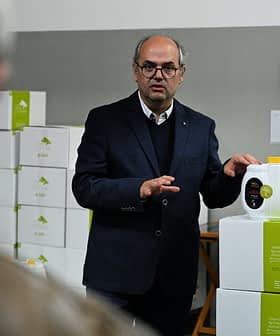Historic Olive Harvest Expected in Portugal
The National Institute of Agriculture and Fisheries Statistics, Portugal estimated that olive production for olive oil would be historic this year.
In the Agricultural forecast released on February 17, 2016, olives for olive oil production could be as high as 765,000 tons, which would be the third-largest harvest in the last 75 years. It would also be 75 percent more than the olive harvest of last year.
Portugal only produced 438,000 tons of olives in 2014, a significantly lower yield than the 634,000 tons harvested in 2013.
Although olives are cultivated in several different regions of Portugal, the high output expected this year is mainly from the Alentejo region in south Portugal. Alentejo is the largest and most important region for olive production in Portugal and produces about two-thirds of the country’s olive oil.
The region uses varied traditional, semi-intensive and intensive methods for olive tree cultivation. However, intensive restructuring of olive farms, planting of highly productive olive varieties, efficient irrigation systems, appropriate fertilization and less severe pruning in Alentejo may be responsible for the high olive harvest expected this year.
Although there are more than 30 varieties of olives native to Portugal, the most common varieties cultivated for olive oil and table olives in Portugal are Galega, Cobrançosa, Cordovil, Verdeal, Madural and Carrasquenha.
Of the six regions with the Protected Designation of Origin for production of olive oil, three — Azeite do Norte Alentejano, Azeite de Moura and Azeite Alentejo Interior — are in the Alentejo region. The remaining three regions are Azeite de Trás-os-Montes, Azeite do Ribatejo and Azeite da Beira Interior.
Although not as well-known as olive oils from Spain, Italy and Greece, 22 Portuguese olive oils were recognized among some of the world’s best at the 2015 New York International Olive Oil Competition.






